As a fly designer and avid fly angler, I spend an extensive amount of time on the water analyzing fish, brainstorming, testing, and refining my flies. One of my favorite ways to get out there and chase fish is on my paddle board. I am literally on the water almost every day and here’s what I have found to be the best and most effective SUP fly fishing gear setup. After 5 years of testing, tweaking and tuning (which equates to over 1,000 days of SUP fly fishing) here’s how I like to rig my SUP.
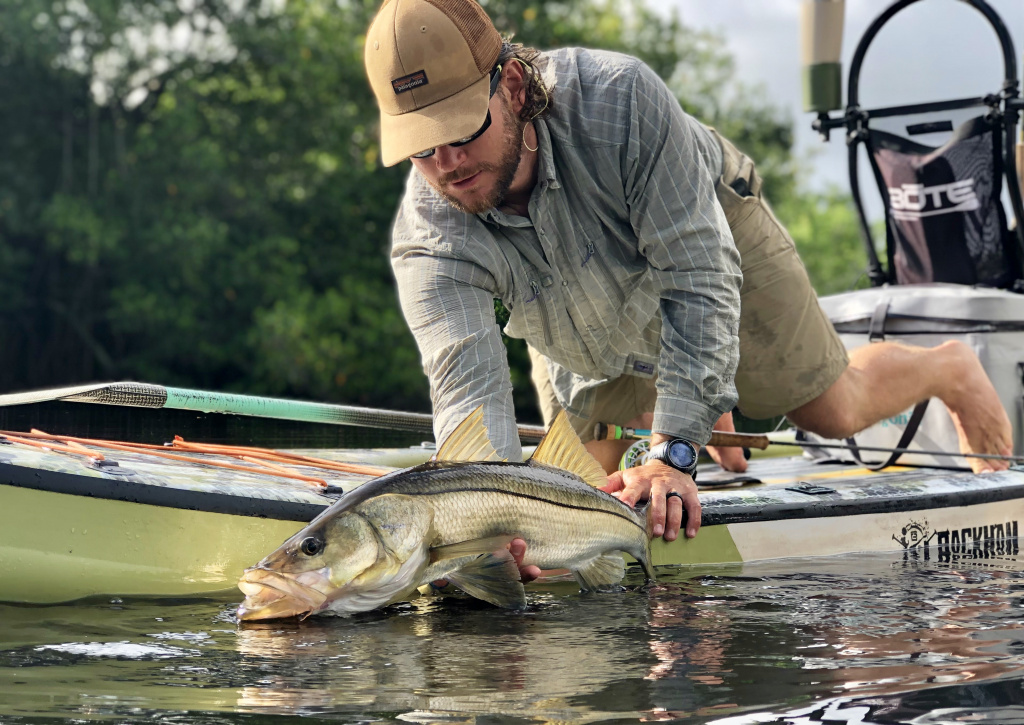
Why Choose a Stand Up Paddle Board (S.U.P) for Fly Fishing
I think the easiest place to start is WHY I choose to fish off a stand up paddle board or a SUP as opposed to a canoe or kayak or skiff. It comes down to ease and convenience. A stand up paddle board, for me, is really easy when I’m by myself.
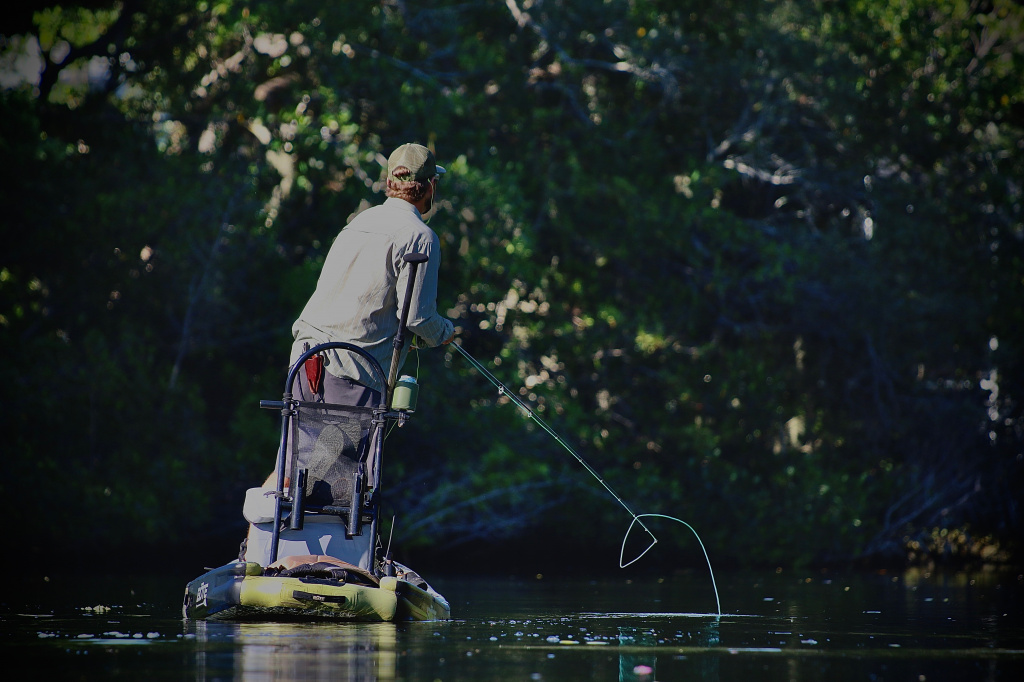
I like to fish standing up so I can see. So I prefer a paddle board, one for stealth, but two visibility. If I’m fishing with a buddy, I might opt for the canoe or something a little bigger, like a Gheenoe for more stability for both of us. But if I’m by myself, I really just want to be able to get on it and go without a lot of hassle. I own a bay boat, but it takes hours of loading the boat, get it down off the lift, getting the covers off so you can’t just pop in and out and fish for a couple of hours.

Once you’re on the water ready to fish, I like to have as minimal of gear on the paddle board as possible. I’m on the water, pretty much every day for at least an hour or so, and I have my setup honed in for how I like to fish. That being said, what I have on the board is the bare essentials for what I need to be effective fishing.
Inflatable SUPs vs Hard Boards
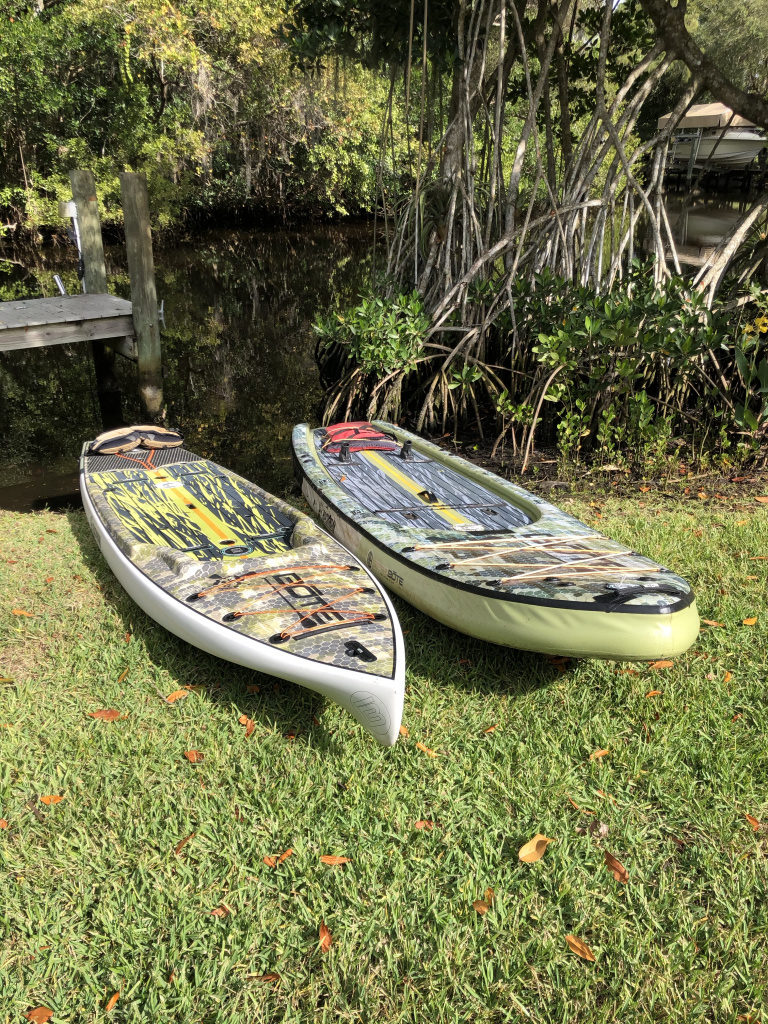
First let’s talk about the board it self. I have both inflatable and hard boards and both have their own advantages and disadvantages. There are numerous manufactures in this space, and hundreds of boards and models to choose from. My personal preference are BOTE boards, not only because of the impeccable quality, but also because of the setup and attachment options for the accessories that they accommodate.
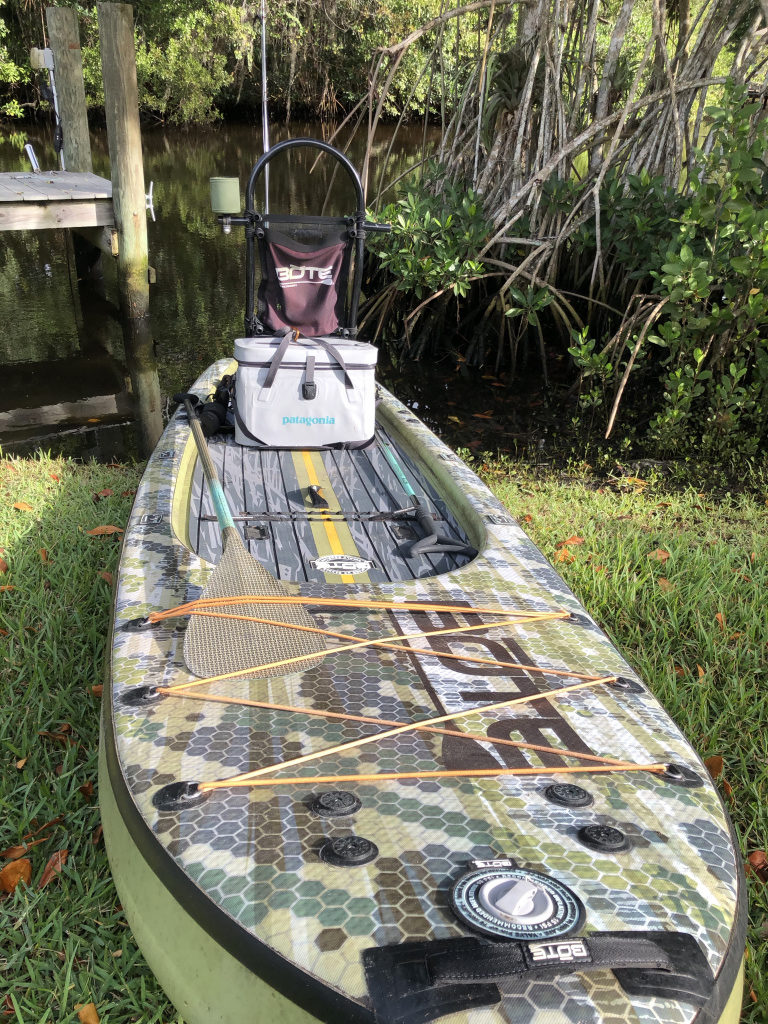
The next choice that needs to be made is wether to go with an inflatable or hard board. Each one has its own distinct advantages and disadvantages. I really like the inflatable boards because they’re so light and stable, not to mention compact and easy to travel with. Each board comes in a convenient travel bag, complete with hand pump and paddle. If you don’t have a car with a roof rack or you’re planning on flying to your fishing location, this setup is hard to beat. Once you reach your destination you simply pump up your board and you’re up and running. That being said, I would strongly recommend getting one of the automatic pumps if you plan on deflating it often. I use the BOTE AeroPump. Not only will this save you hours of time, but it will also save your arms and back… Trust me, you will thank me.
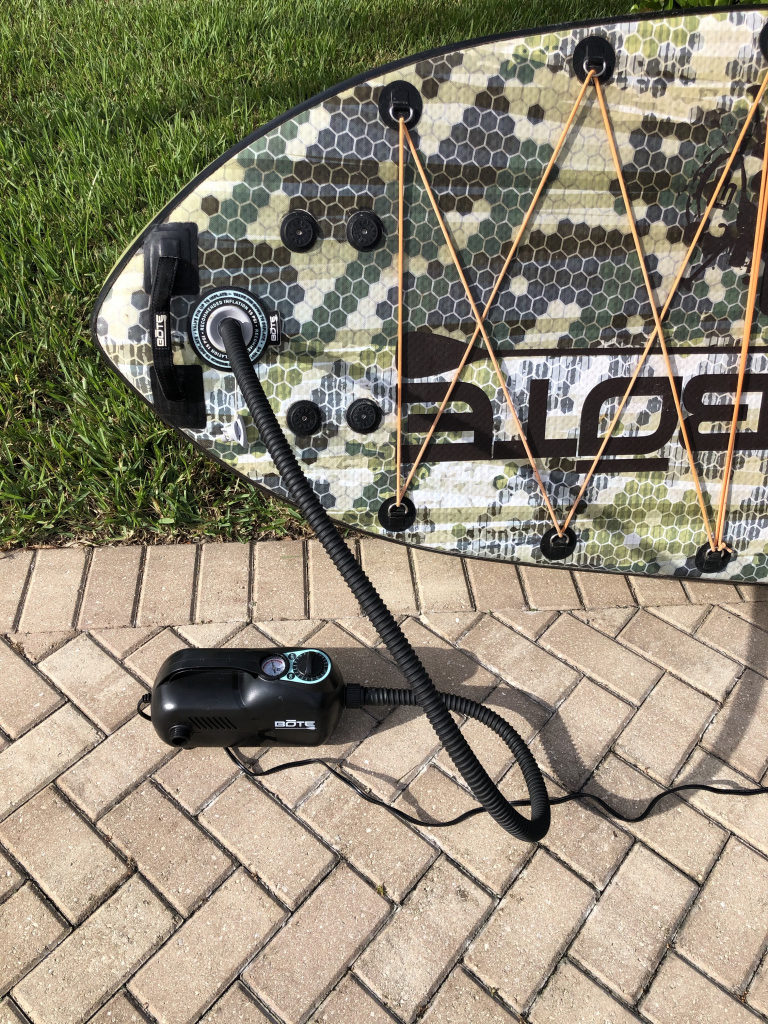
The inflatable paddle board comes with a hand pump, but it takes quite a bit of time and a considerable amount of effort to get the board pumped up to the recommended 15 pounds. The AeroPump has an adapter for a cigaret lighter or alligator clips to attach it directly to a battery. Simply set the dial to the desired poundage, and go about your business. When complete the pump automatically shuts off.
Once fully inflated, they are surprisingly ridged and stable. I have no problem putting my eight year old daughter Lucy on the front of the board without feeling the least bit tippy or unstable. Since they have a flat bottom, they maneuver and turn quite easily but with this design comes haul slap. Because it doesn’t have a keel or displacement hull, It has a tendency to slap in wind or light chop which can be a factor when sneaking up on spooky fish.
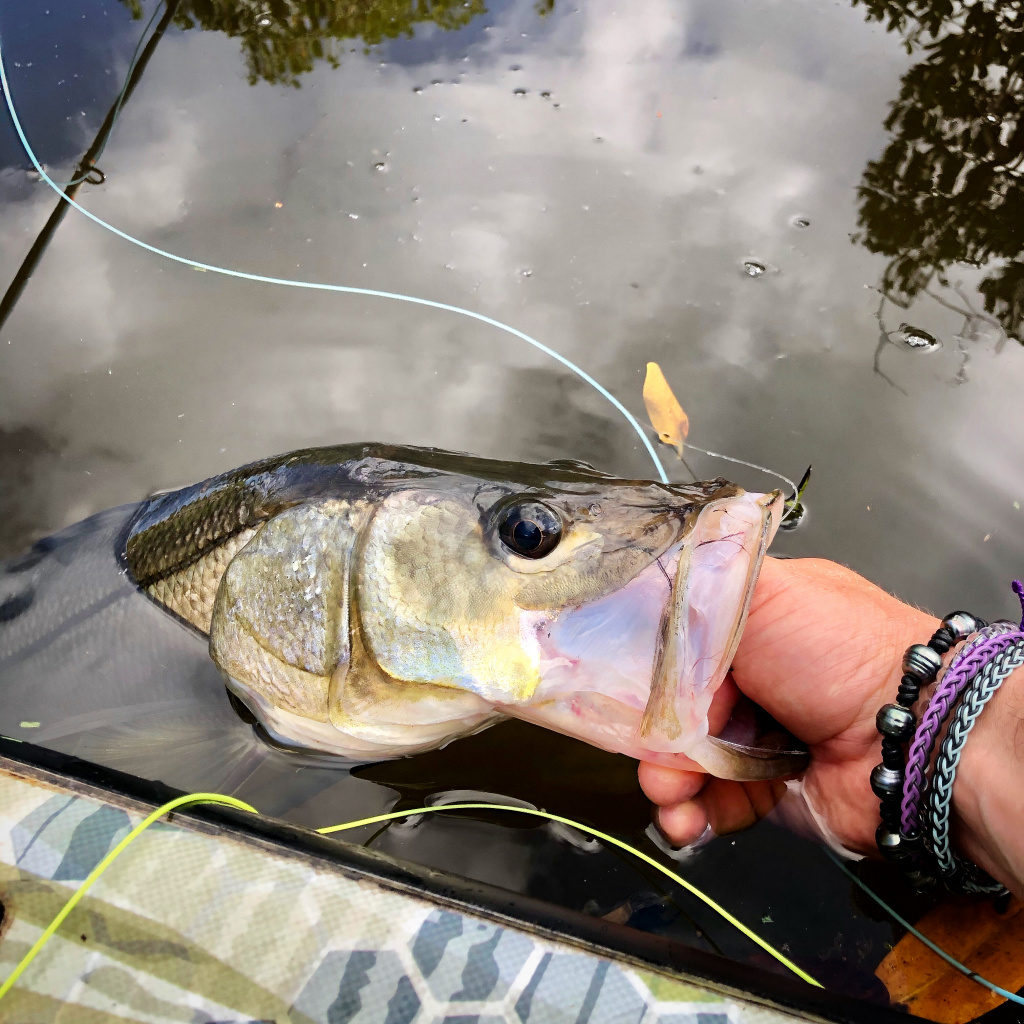
The other characteristic of an inflatable you need to take into consideration is durability. The board is constructed from military-grade PVC so you don’t have to worry about scratches and dings like you would with a hard board, however, under the right circumstances, they can be punctured. For the most part, water debris, rocks and sharp sticks aren’t and issue, but if you hook the board or take a direct hit from a sharp dorsal fin or gill plate you could spring a leak. Most species of fish aren’t armed with an arsenal of needle sharp spines, so this is not too much of an issue, but if you’re targeting species like snook or cat fish, you have to be very careful how you handle the fish around or on the board. I have punctured mine with a spicy juvenile snook flopping around. They can be patched of course, but if you’re a ways away from home or the boat ramp, you better get paddling!
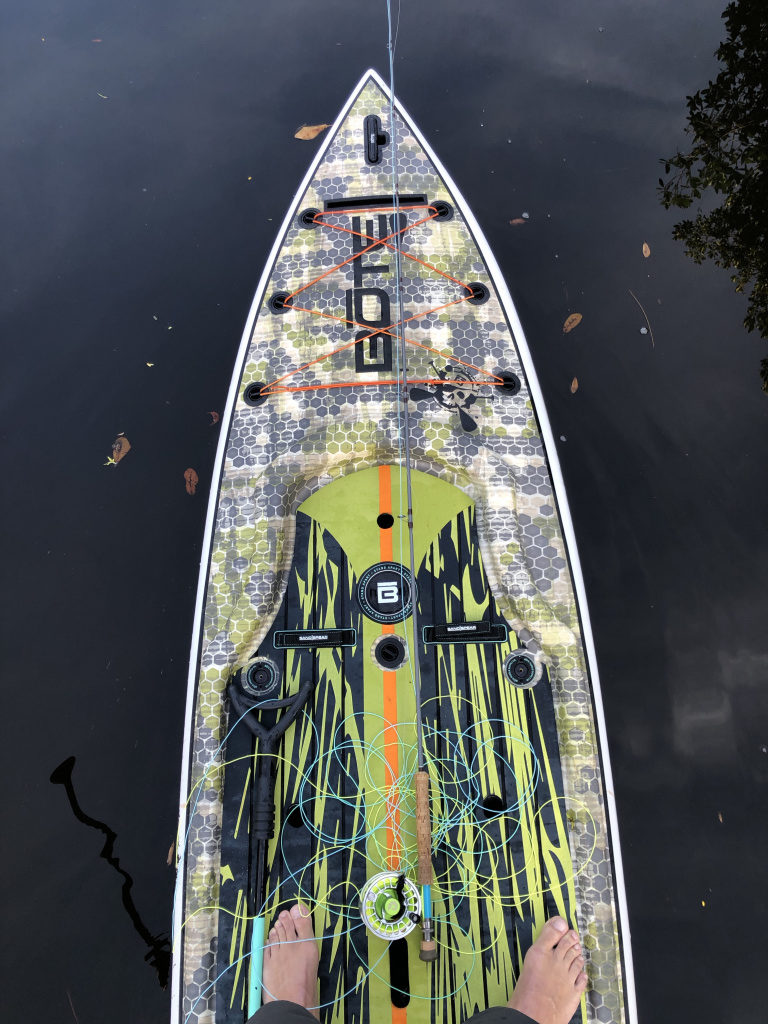
If you have any doubt’s about your casting skills or the board durability the hard hard boards will put your mind at ease. Unlike the old foam and epoxy style boards, the new BOTE boards are made with Gator Shell technology. This is a ballistics grade composite that is 6 times stronger than epoxy and provides a smooth yet uncompromisingly tough exterior. The advances plastic construction is more light weight and buoyant too, which allows the board to float higher in the water. Less water friction means easier paddling, faster speed and increased weight capacity.
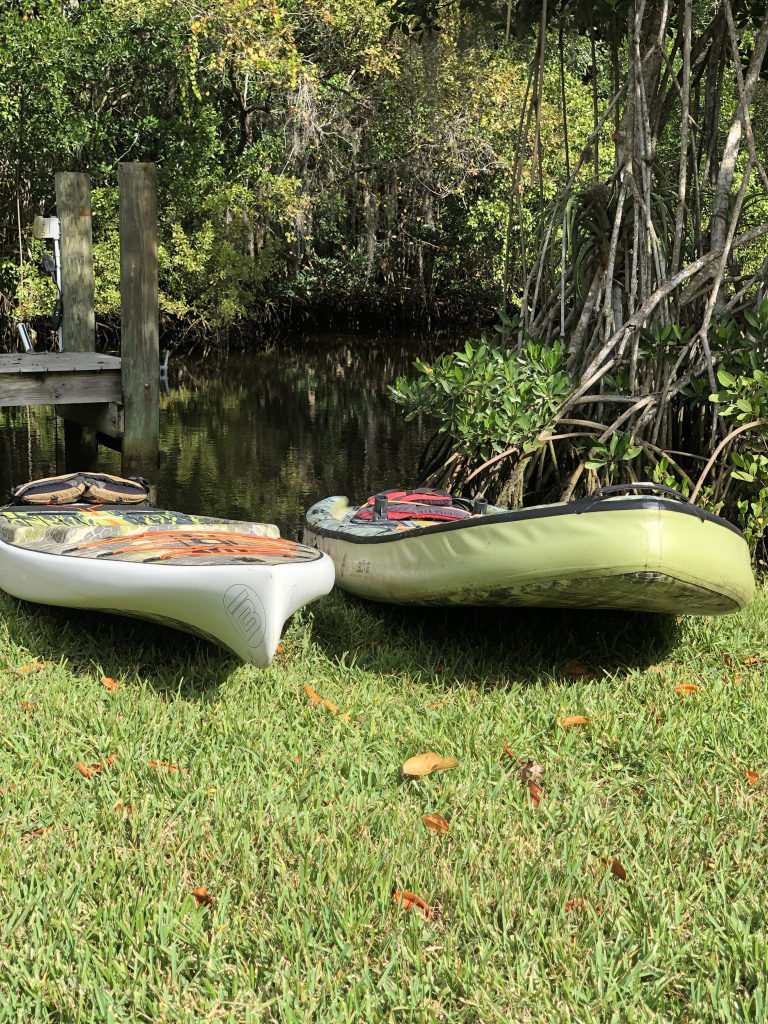
My Favorite Fishing SUP
I fish off the BOTE 12′ Rackham which has a displacement hull, and it is by far my favorite. This pointed nose design, allows the board to cut through the water and track in a straight line effortlessly. This hull style greatly reduces water noise or slap, however it does make turning on a dime more difficult. The hard boards tend to be a little more narrow than the inflatables, and the stability albeit very good, is noticeable when comparing the two. After fishing off an inflatable for years, the transition back to a hard board forced me to tighten up my casting and be more aware of my movements. I find a wider more forward stance on the board reduces the left to right wobble and allows for more range of motion when casting. Squatting, leaning down or bending over needs to be more controlled and fighting big fish is a little more tricky than it is on the inflatable. One advantage to the hard board is the built in Stashpod. This thoughtful upgrades keep your valuable safely contained or your beverage out of harms way. If you’re just popping out for a quick trip you don’t have to worry about bringing along additional dry storage.
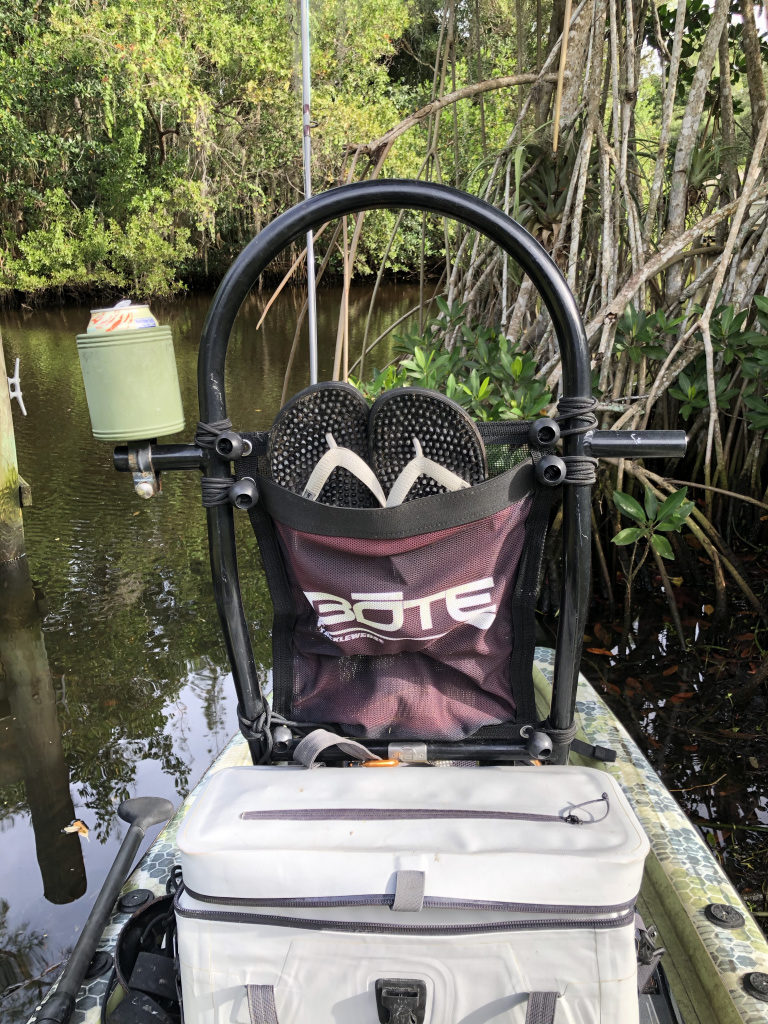
Tackle Rac
The first accessory that I adorn all my boards is the is the Tackle Rac. It’s compatible with both the hard and inflatable, with the addition of screw on Rac Receivers, and is more than just a fancy leaning post. This invaluable upgrade is made from marine grade aluminum, so it doesn’t add a lot a weight, about 4 pound, and it’s powder coated, so you don’t have to worry about the glare spooking fish. Off the sides are shorter posts or “ears” which give you a platform for mounting additional accessories.
Tackle Web
I outfit the Tackle Rac with a BOTE Tackle Web, which is a mesh pocket with a Velcro top, It’s attached to the Tackle Rac with 6 bungies that look like the hair ties from the 80’s with the plastic balls on the end. This flat mesh pouch is out of the way and large enough to accommodate a small fly box, a thin jacket for chilly mornings, and your flip flops, so they are up off the deck and the fly line doesn’t lasso them. I find the less under or around your feet the better. I also mount a metal bike Cruzie or cup holder to the right ear of the Tackle Rac. I use this not only for carrying a drink, but also it’s also the perfect size for holding your iPhone. If you want to shoot some video as you paddle or if you want to take a selfie with a fish, you can simply set it up on a timer. I have a Go Pro and a larger digital camera, but I live by the KISS principle (keep it simple stupid) and this is the easiest way to take pictures or film when I’m trying to fight or control a caught fish.
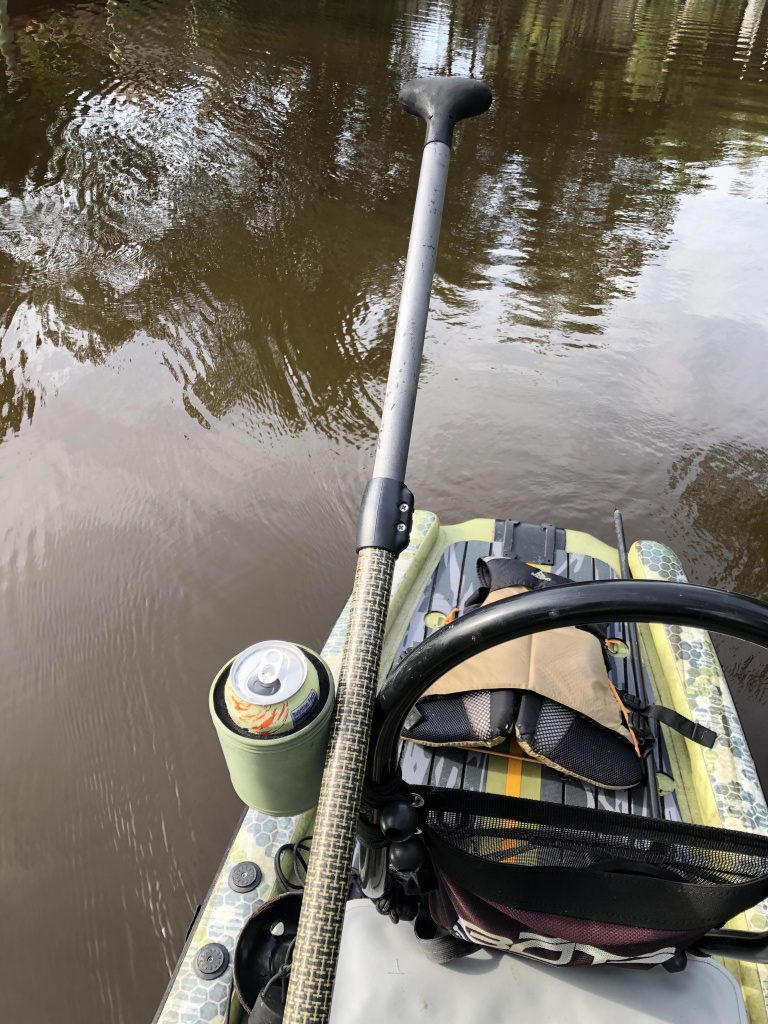
The other handy thing about the Tackle Rac rigged with a cup holder is that it can be used as a paddle rest so I don’t have to bend down as much. I mount the cup holder just far enough away from the main bar so that I can wedge my paddle in between. I line up the tip of the paddle directly behind the Velcro Sand Spear strip and lean the paddle between the Rac and the cup holder at a 45 degree angle. This keeps your paddle secure and in the same spot all the time and it’s always at your fingertips. You get used to it being in the same spot and eventually you can instinctively reach to the same spot without taking your eyes off the fish. If you are right handed like me, you hold the fly rod and fly at the ready in your left hand so you can make minor adjustments to your position, by paddling with your right hand (one handed). This way you don’t have to keep bending down to pick up or lay down the rod and paddle. This keeps your eyes fixed on the fish, limits movement and reduces the chance of you have of loosing your balance.
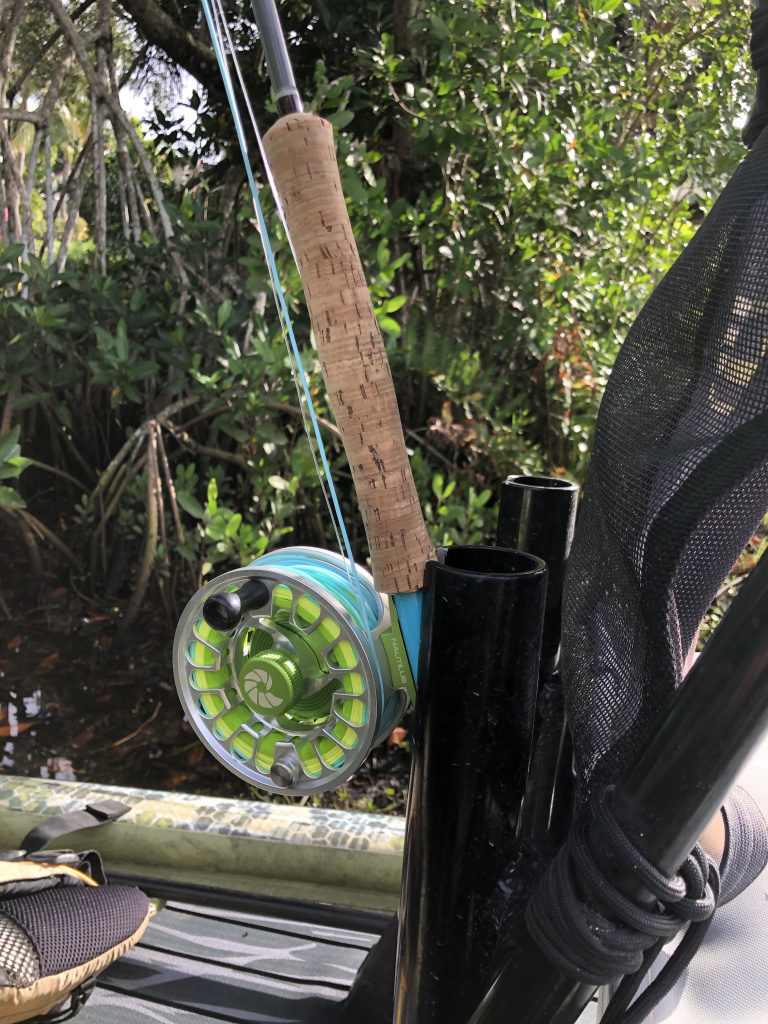
The Tackle Rac comes outfitted with two slotted rod holders on the back. These will accommodate spinning or fly rods. If you’re not planning on fishing on the way to your spot, you can stow both rods out of the way. I typically bring 2 rods on every trip, just so I have a backup rod incase my primary rod gets damaged. I rig the second rod with a different fly or set it up for a different target species.
When I’m snook or tarpon fishing, I like one rod set up with a dark color fly and the other with a light colored fly so I can make a quick change if one isn’t producing. Sometime’s I’ll have one rod set up as a redfish or sheep’s head rod with a little crab on it so I’m prepared for any number of fishing scenarios.
The second rod is stowed safely behind you and out of your way, free from fly line entanglement, so there is no chance of it being pulled off of the board. If an opportunity presents it self, simply reach back, and grab the other rod.
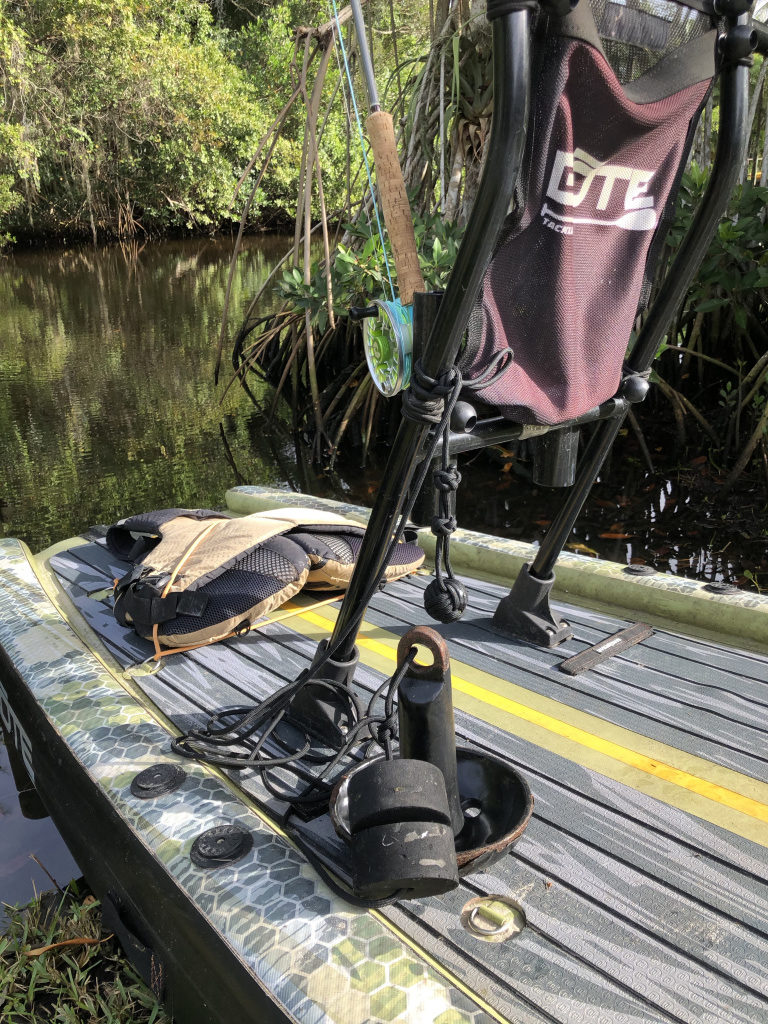
Anchor and Sand Spears
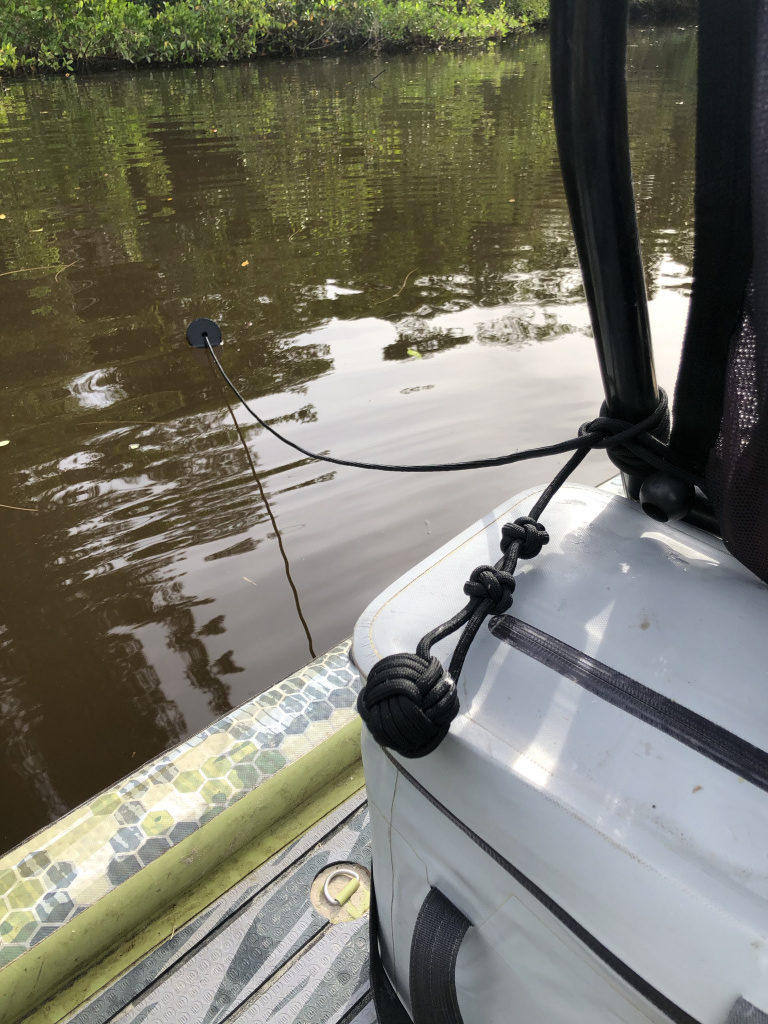
Another must have for your SUP fishing rig is a 10 to 15lb mushroom anchor, that’s tethered on 15 feet of 750 Military Grade paracord. The anchors weight and shape is critical. It needs to be heavy enough to hold you in place in fast current and shaped so it grabs the sand and holds you in place not only when you’re casting, but more importantly when you’re fighting a fish. 750 is a 11 strand parachute cord that’s rated for 800 pounds. It’s a little stiffer than the standard 550 and way more durrable. I like to tie a monkeys fist at the end so it’s easy to locate and grab the tag end should I need to detach the anchor for some reason. Thread an inexpensive foam float onto the para-cord before tying the monkeys fist at the end. This will keep it from sinking so you can easily locate your anchor line should you have to untie to chase down a fish. I tie my anchor line to the Tackle Rac with a quick release knot like a highwayman’s hitch. Tying off to the Tackle Rac is much more convenient to reach than the front or back of the board. When I’m paddling and I see fish, I drop the anchor in, as quietly as I can, slipping line slowly until it reaches the bottom. Once it settles on the sand, I slowly let the line slip through my fingers until the board comes to a gradual stop. If you’ve got the wind at your back or you’re just paddling at a pretty good clip and throw the anchor over with out fettering your speed, you’ll stop abruptly with a hard jerk. This has a tendency to throw you off balance pretty quick even if you’re anticipating it.
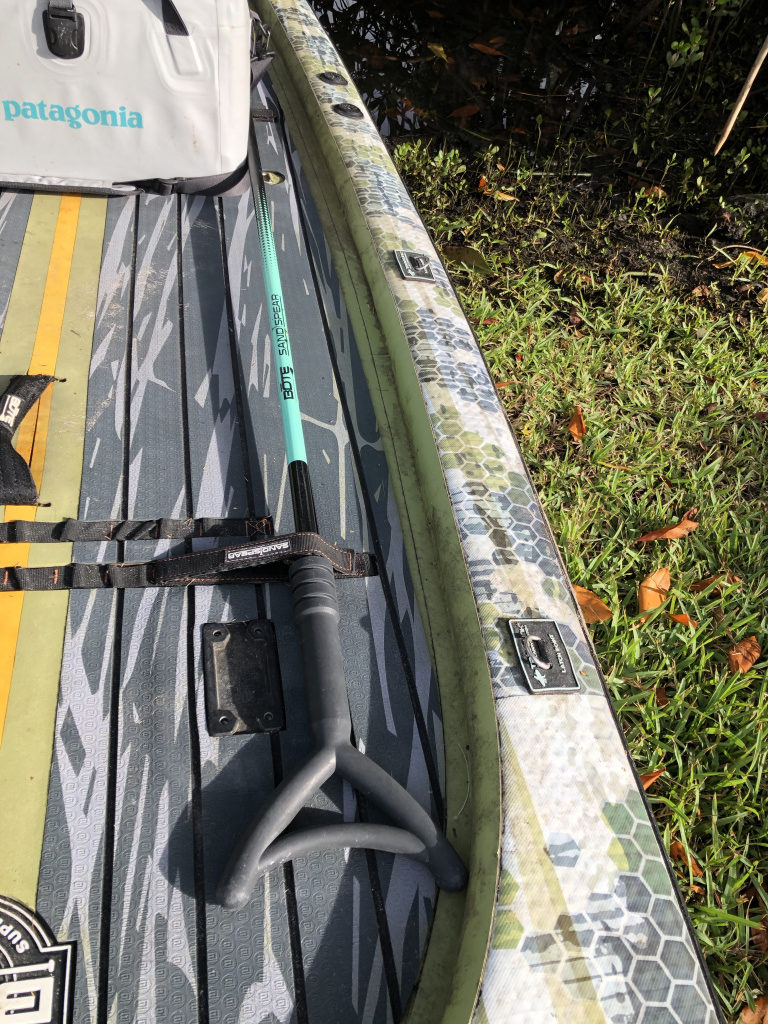
Often times I fish from an unanchored position and just drift with the current. You can cover way more ground this way and it’s way more effective especially if you don’t have great visibility for sight fishing. The first thing you want to do as soon as you hook a fish is to get that anchor in the water and get the board stationary. Otherwise, the fish takes advantage of your momentum and you end up getting pulled, rather quickly, somewhere you don’t want to go… like into the spider laden mangroves and then for a swim. A large fish can also spin or tip you off the board by coming directly under you, so you want to get control of the boards movement as soon as possible. A stable position is paramount, especially when you’re fighting larger fish or fish like snook that have a rough mouth. Time is not on your side so you need every advantage to get them landed before they wear through the leader.
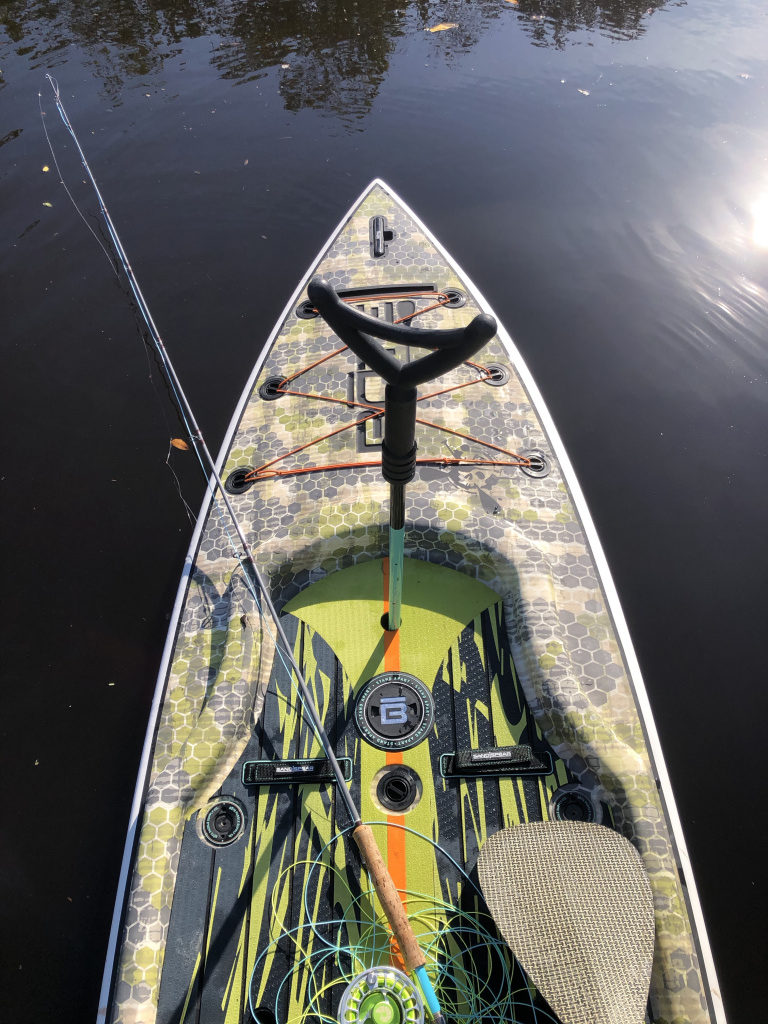
A Sand Spear or a stake pole is the lynch pin to securing your position while fishing. This multipurpose tool is extremely handy shallow water fishing scenarios Not only will it pin your board in place while your waiting on crusing fish, but it works great for polling around if you don’t need to go far and your trying to be stealthy. It’s 8′ in length so so it’s plenty long for polling to a new location or positioning the board in a few feet of water.
If you have a combination of heavy wind and cross current, the anchor alone really won’t help you that much. It keeps you stationary in one general area, but you’ll have a tendency to drift around in a circle. If you are in a foot or so of water, and the anchor line is 15, you’re talking about a distance of 30 ft. By using the anchor and Sandspear together the anchor will hold you from the current and the stake pole will keep you from from spinning on an axis… Which is really important if you’re try to keep your distance from a school of fish.
SUP Fly Fishing Preparation
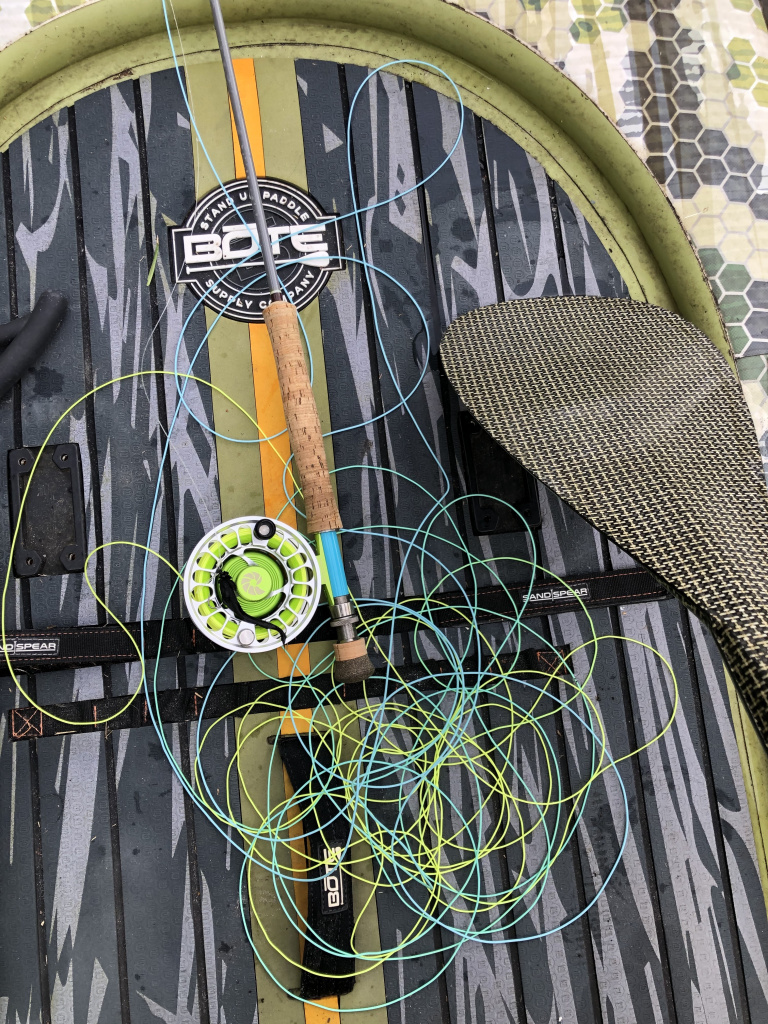
Catching fish consistently from a paddle board is all about preparation and organization. Between staying balanced, casting, managing the line, and paddling and positioning the board, you will have a lot of balls too juggle. Managing what you can, prior to encountering fish is key. Typically I will strip off 60 to 70 feet of fly line and make a quick cast to clear the line. Then I carefully coil it neatly at my feet. I set the rod on top of the coils, doing my best not to disturb the stacking order of the coils and then I place the fly on top of the reel. That way I can quickly pick up the rod and fly at the same time and I’m all ready to make a cast should I spot a fish. If I have more time, I will slowly approach the fish paddling with one hand and holding the rod in the other. When I’m in casting range and the desired position, I will lean the paddle off my cup holder, drop the anchor and pin the board into position. Once completely stationary, assess the fishes position and make a more calculated cast.
Patagonia Stormfront® Great Divider 29L
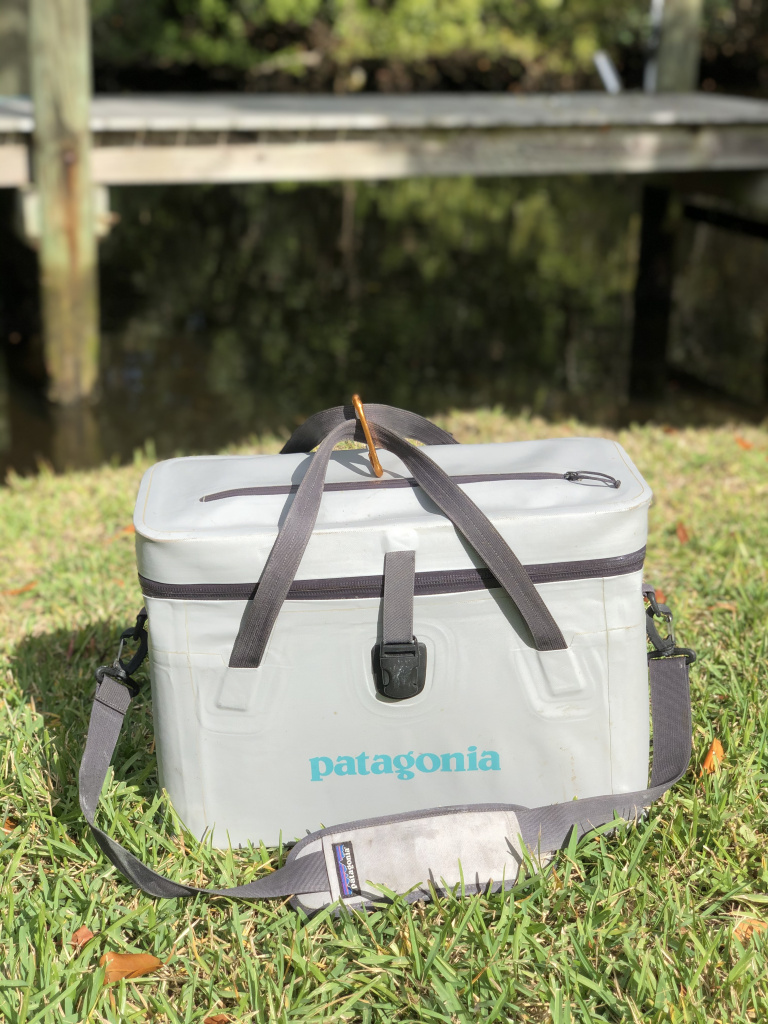
The other piece of organization equipment I don’t leave home without is my Patagonia Stormfront® Great Divider Bag. This purposefully designed bag has a water resistant exterior and a segmented interiors the can be adjusted accommodate a days worth of gear. It’s compartmentalized approach to organization allows you to quickly and effortlessly access your gear. The tall rectangular shape allows you slide it right up tight to the back of the Tackle Rac, so it’s behind you and out of the way. The carrying strap tucks neatly underneath the bag, and the carrying handles are small enough that they don’t get tangled in the fly line at your feet.
Paddles
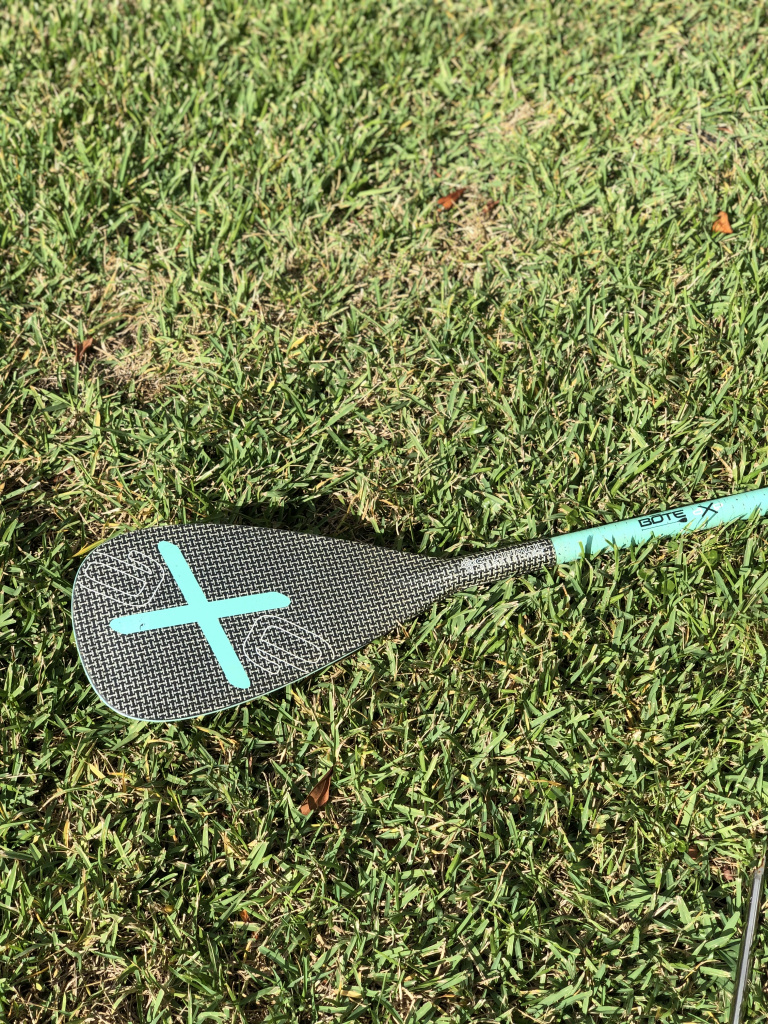
Not all paddles are created equally… and the weight and comfort of the paddle you choose will make a big difference, especially if you’re planning an all day adventure. The general rule of thumb is that your paddle should be 8-10 inches taller than the paddler. So if you’re 6′ your paddle should be 6’8″ – 6’10″… but I guess it’s just personal preference. I tend to err on the longer side but that’s just me. Since I spend a considerable amount of time paddling or steering the board with one hand while fishing, I gravitate toward the lightest paddle I can get my paws on. Bote’s Chainmail Axe paddle is made from carbon fiber and weighs in at a mere 26oz. Their exclusive Chainmail weave make this paddle very durable and it looks pretty cool too. Another key comfort feature on this paddle is a foam palm grip. You will experience way less hand fatigue going with the squishy foam as apposed to the hard plastic alternative. This paddle is available in a few different configurations as well depending on your intended use.
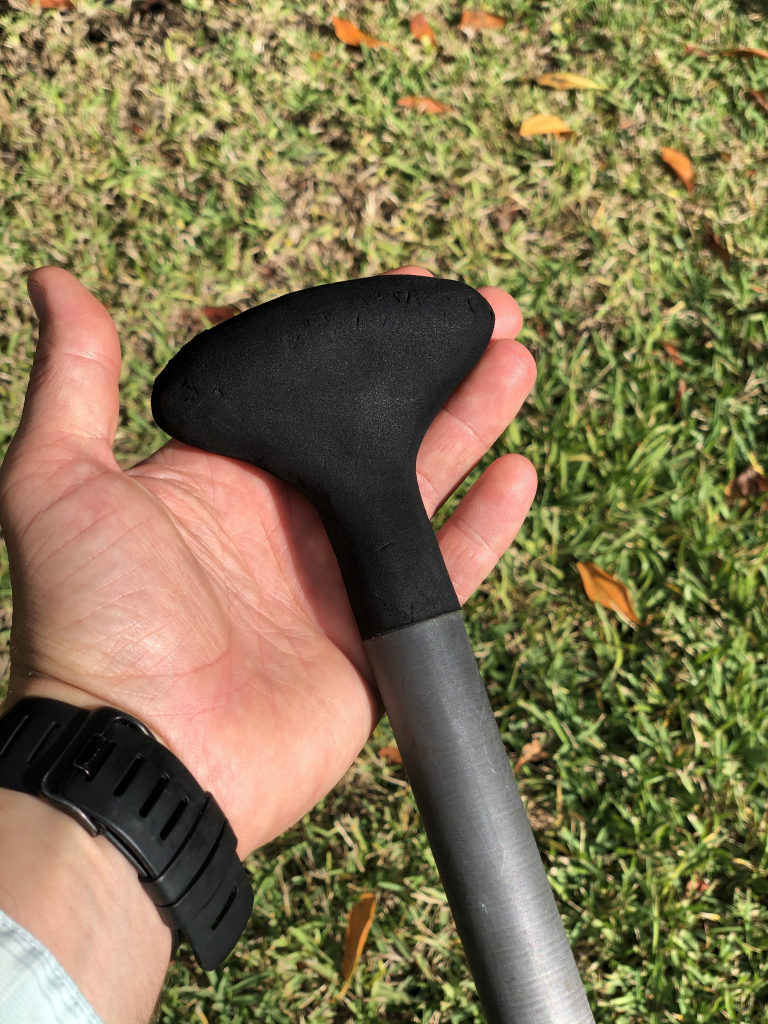
If you live on the water and you primarily use your board on your home waters, The Axe Edge Chainmail Pro Paddle. It’s a one piece paddle that you tailer fit to you. If other members of the family or a fishing buddy will be using your paddle on occasion you may want to consider goin with a 2 piece adjustable paddle, that give you a larger range of use. The Axe 2 Piece Adjustable Paddle has an adjustable shaft for secure and easy sizing. The third options for those adventure anglers that are planning on traveling to fish, is a multiple piece or travel ready paddle. The Axe 3 Piece Adjustable Paddle has the same secure locking system as the 2 piece, but can easily be broke down in to 3 sections and stowed in your luggage.
Other Essential SUP Fishing Gear
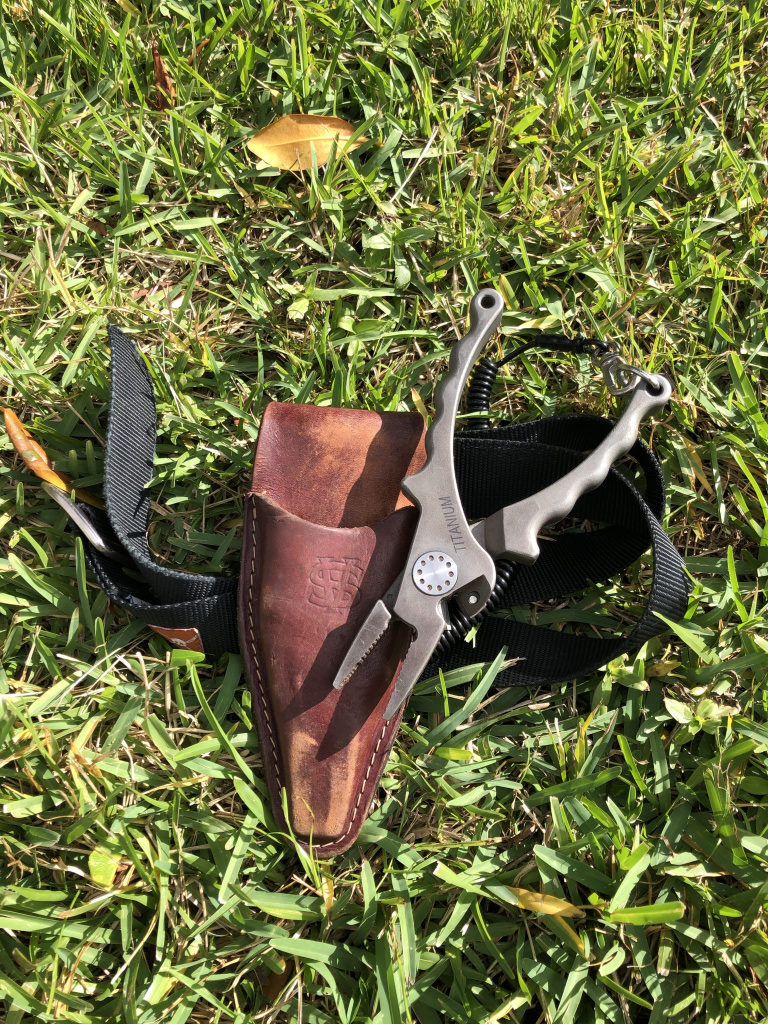
As I mentioned before, when I’m fishing off my board, I try to bring only the bare essentials. That being said, my bag is packed to the gills and ready to go no matter where I’m fishing or what I’m fishing from. Here are a few other items that I don’t leave home without.
- Maven Mission Saltwater Fly 7’6″ 4pc – 9 & 10 wt.
- Nautilus NV-G 9/10 Reel
- Cortland 30lb Micron Fly Line Backing
- Airflo Bruce Chard Tropical Punch Fly Line
- C&F Designs Waterproof Grand Slam Fly Box – Tarpon
- Benchmade – Osborne 940-1
- Patagonia Men’s River Salt Jacket
- Patagonia Sun Mask
- Patagonia Wading Boots
- Patagonia Sun Gloves
- 2″ Self Adhering Finger Tape
- Van Staal 7″ Titanium pliers with Patagonia Tech Web Belt
- Boga Grip
- Costa Del Mar 580g lenses (Sunrise Silver Mirror & Amber lenses)
- Costa Del Mar Cleaning kit (micro fiber cloth and spray)
- Rodan+Fields 30SPF Water Resistant Sunscreen
- Rodan+Flields 25SPF Lip Shield
- Nano-Towel
- Cutter Skinsations Insect Repellent
- Yo-Zuri Disappearing Pink Fluorocarbon (15-80lb spools)
- Petzl Rechargeable Head Lamp
- Go Pro with head strap mount and extra cards/batteries
- Sony Alpha a6500 Mirrorless with a Carl Zeiss T E 24mm F1.8 ZA E-mount Prime Lens
- Yeti Rambler 30oz
- Retractable Cloth Measuring Tape
- RX Bars
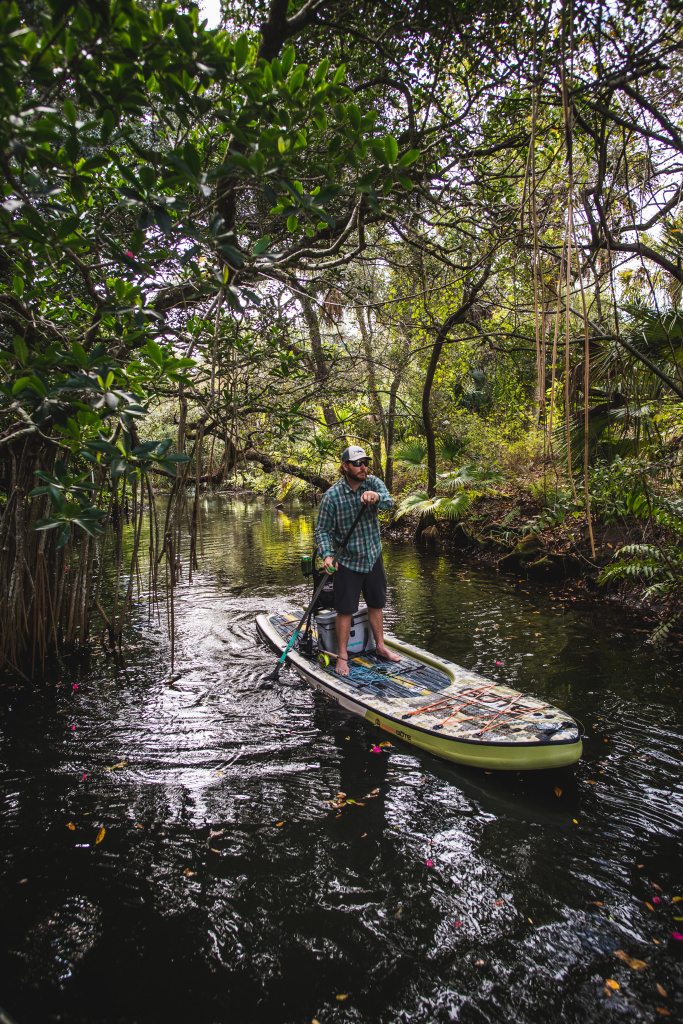
My best advice is to get a board and get out there!
Like anything else, there is just no substitute for experience. You just need time on the water to discover how you want to fish from it. If you have never paddle boarded before, it may take several trips to feel comfortable on the board before you start experimenting with fishing. Once you are acclimated to your board you can start exploring what works best for you and your fishing situation.
Whether you choose to go with an inflatable or hard board, buy the best board you can afford and retrofit it with what you need to overcome the challenges that present them selves. The Over the past 5 years, I have honed my setup for a very specific estuary, but your rig and required tools may be very slightly different depending on your target species.
Hopefully this gives you a place to start and helps you consider possible setup options for your own SUP Fishing Setup. The tide waits for no man, so get yourself a board and get out there!
Want to see my setup in action?
Costa Del Mar asked me to put together a quick video to go over my SUP setup. Feel free to check it out and ask me any questions you may have.
